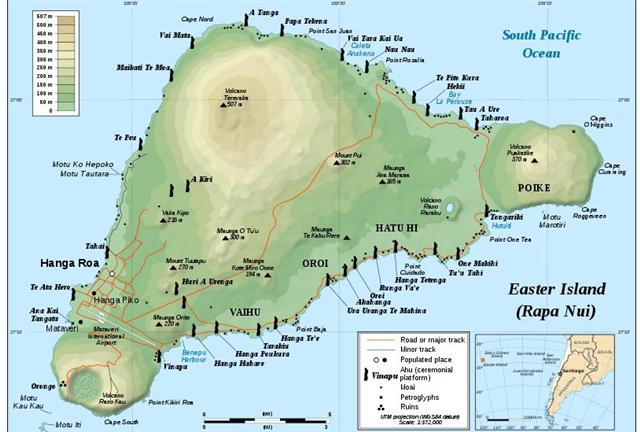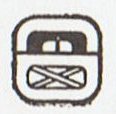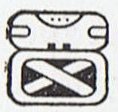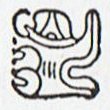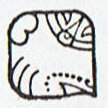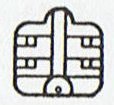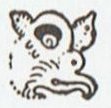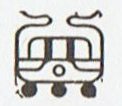3. I am certain the text of G describes the structure of time-space, you could say it is a complicated kind of calendar. This is the story, the context, against which the individual signs are to be read Such is my conviction. A calendar is a kind of map, but while an ordinary map simplifies the terrain in which you can move, making your steps follow the lines on the map, a map of time-space is possible to follow only in your mind. Moving in time is not something your body can accomplish, it just floats helplessly down on the surface of the river of time, out to the sea of oblivion. However, on Easter Island they knew the old solution, they named the features of the terrain after their time-space map, and then it was possible to also bodily move both forwards and backwards in time. Anakena, for instance, is a fine beach possible to find on most ordinary maps of the island and then to reach it by walking on foot, but it is also a feature in the time-space map, viz. new year cardinal point:
These are our modern 12 months and I have coloured them to make it easier to remember that south of the equator the months of summer (red) are those opposite to our own. I suggest the features of time-space were there in the minds of those who first went to Easter Island. They knew them because they relied on their navigational stars for guidance (cfr at The Rain God). When they arrived and had explored the island they could then gradually, I suspect, manipulate the adjuncts of their time-space map to make it easier to see the corresponding features on the ground. On the other hand, the complex details of their intricate and exact time-space map would tend to spread more names across the island than otherwise would have been warranted: "... the lack of a name for the island as a whole 'was quite in accord with the islander's habits of mind to speckle his home with names changing every few feet and to leave the major divisions nameless' ..." (Métraux quoting William Churchill in his Ethnology of Easter Island.) The primary source for the structure of time-space (and indirectily also for the names in the geography of Easter Island) must have been the cycles of Moon, Sun, and the other celestial 'persons'. These cycles were far from easy to map, however, and it could only be done against the stable background (context) of the fixed stars, such major ones as were listed in for instance the Tahitian list of 'star pillars' (ana). Ana-kena probably is a similar such 'star pillar', a cardinal point in time brought down to earth at the optimal place, and depicted as the place where the 'parent' (matua) king landed: 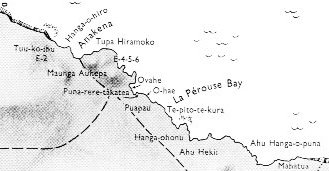 ... The dream soul spoke the following: 'There it is - ho! - the place - ho! - for the king - ho! - to live (there in the future), for this is (indeed) Rangi Meamea ...
The Old Sun King (the old year) Hotu Matua was the origin of Tuu Maheke, his first son to be born on the island, and a personification of the new year, and he was born on the beach of Anakena. In Manuscript E we can read of the events just before he was born:
The description is here probably based on a lunar calendar with 18 regular months, each with 20 nights, i.e. the same structure as one of those the Maya were using:
|
|||||||||||||||||||||||||||||||||||||||||||||||||||||||||||||||||||||||
